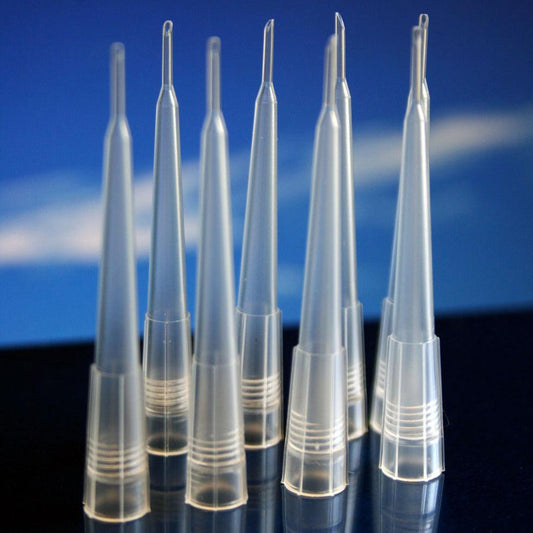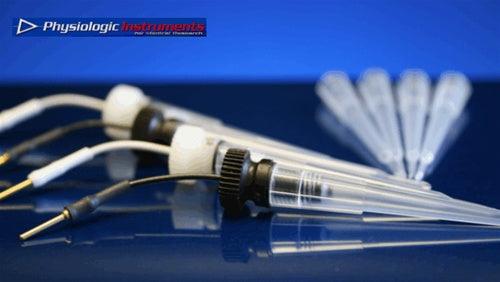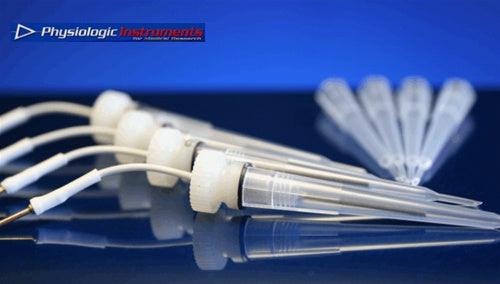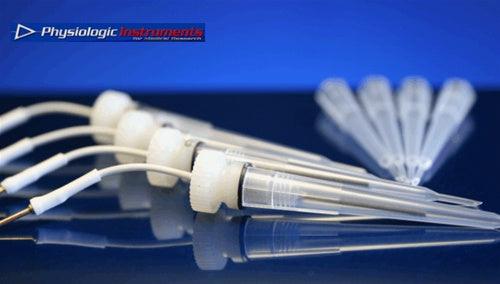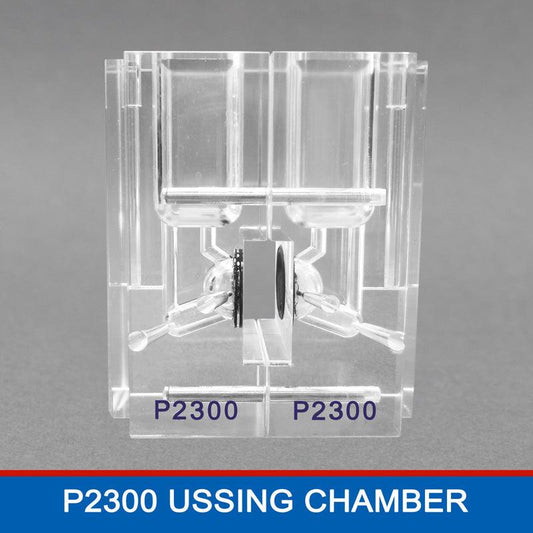Ussing-Kammer-Test
Ein wichtiges Werkzeug zur Analyse des epithelialen Transports
Die Ussing-Kammer-Methode ist eine weit verbreitete elektrophysiologische Technik zur Untersuchung der Transportprozesse in Epithelgeweben. Sie wurde in den 1950er Jahren von Hans Ussing entwickelt und hat sich zu einem Eckpfeiler der physiologischen Forschung entwickelt, insbesondere in Studien zum Ionentransport, zur Barrierefunktion und zur Arzneimittelabsorption in verschiedenen Epithelgeweben, darunter der Magen-Darm-Trakt, die Lunge und die Nieren. Die Methode ist unverzichtbar, um die Mechanismen des epithelialen Ionentransports und die Wirkung pharmakologischer Substanzen auf diese Prozesse zu verstehen.

Prinzipien und Aufbau
Die Ussing-Kammer besteht aus zwei Halbkammern, die physiologische Lösungen enthalten und durch eine Epithelschicht oder eine Zellmonoschicht voneinander getrennt sind. Mithilfe von in den Kammern platzierten Elektroden lassen sich elektrische Parameter wie Kurzschlussstrom (Isc), transepitheliale Potentialdifferenz (TEPD) und Gewebewiderstand messen. Diese Parameter geben Aufschluss über den Ionentransport durch die Epithelbarriere.
Um eine konstante Spannung am Gewebe aufrechtzuerhalten, wird häufig ein Voltage-Clamp-System eingesetzt. Dies ermöglicht es Forschern, den Ionenfluss zu messen und die aktiven Transporteigenschaften des Epithels zu bestimmen. Darüber hinaus erlaubt die Zugabe von pharmakologischen Wirkstoffen, Hormonen oder spezifischen Ionenkanalblockern die Untersuchung der molekularen Mechanismen, die den epithelialen Transport steuern.

Anwendung unseres EasyMount-Using-Kammersystems
Unser EasyMount Ussing-Kammersystem ist ein hochmodernes Gerät, das die Durchführung von Studien zum epithelialen Transport mit verbesserter Genauigkeit und Effizienz ermöglicht. Das System vereinfacht den herkömmlichen Aufbau der Ussing-Kammer durch die Integration präzisionsgefräster Kammereinsätze, die Epithelgewebe oder Zellmonolayer sicher fixieren. Dank seines modularen Designs können Forscher reproduzierbare Experimente mit minimaler Gewebeschädigung durchführen.
Das EasyMount-System ist besonders nützlich in:
-
Elektrophysiologische Untersuchungen: Durch die Bereitstellung einer stabilen Umgebung für Epithelgewebe gewährleistet es genaue Messungen des Ionentransports und der Barrierefunktion.
-
Beurteilung der Arzneimittelpermeabilität: Das System ermöglicht das Hochdurchsatz-Screening von pharmazeutischen Verbindungen hinsichtlich ihrer Auswirkungen auf den epithelialen Transport und die Integrität.
-
Individualisierung und Anpassungsfähigkeit: Forscher können die Kammergröße, die Elektrodenplatzierung und das Flüssigkeitsvolumen anpassen, wodurch es für verschiedene experimentelle Anforderungen geeignet ist.
-
Benutzerfreundliche Bedienung: Das ergonomische Design des Systems und der vereinfachte Montageprozess reduzieren die Vorbereitungszeit und verbessern die Reproduzierbarkeit.
Das EasyMount Ussing Chamber System ist dank seines innovativen Designs in der biomedizinischen und pharmazeutischen Forschung weit verbreitet und trägt dazu bei, Studien zum epithelialen Transport zu optimieren und qualitativ hochwertige, reproduzierbare Daten zu generieren.
Anwendungen der Ussing-Kammer-Methode
Die Ussing-Kammer-Methode findet breite Anwendung in der Grundlagenforschung und der angewandten Forschung. Zu den wichtigsten Anwendungsgebieten gehören:
-
Ionentransportstudien: Forscher nutzen diesen Test, um zu analysieren, wie Ionen wie Natrium (Na+), Chlorid (Cl-) und Kalium (K+) durch Epithelgewebe transportiert werden. Dies ist besonders wichtig für das Verständnis von Erkrankungen wie Mukoviszidose, bei denen der Chloridtransport gestört ist.
-
Barrierefunktionsanalyse: Die Integrität von Epithelbarrieren, beispielsweise im Darm oder in der Lunge, lässt sich mithilfe der Ussing-Kammer beurteilen. Durch Messung des transepithelialen elektrischen Widerstands (TEER) können Wissenschaftler die Auswirkungen von Krankheiten, Entzündungen oder medikamentösen Behandlungen auf die Epithelpermeabilität untersuchen.
-
Pharmakologische und toxikologische Studien: Der Test dient der Beurteilung der Auswirkungen von Arzneimitteln und Toxinen auf die Epithelfunktion. Durch Einbringen der Substanzen in die Kammer können Forscher deren Einfluss auf den Ionentransport, die Barrierefunktion und die allgemeine Gewebegesundheit bestimmen.
-
Nährstoff- und Arzneimittelabsorption: Die Ussing-Kammer hilft bei der Beurteilung der Absorption von Nährstoffen wie Glukose und Aminosäuren durch Epithelbarrieren. Sie wird auch in der Arzneimittelentwicklung eingesetzt, um den Transport und die Bioverfügbarkeit pharmazeutischer Wirkstoffe zu untersuchen.

Vorteile und Einschränkungen
Einer der Hauptvorteile des EasyMount Ussing-Kammer-Assays ist seine Fähigkeit, quantitative Echtzeitdaten zu epithelialen Transportmechanismen zu liefern. Im Gegensatz zu anderen Methoden, wie beispielsweise Patch-Clamp- oder Fluoreszenz-basierten Assays, ermöglicht die Ussing-Kammer die Untersuchung intakter Gewebe, wodurch deren physiologische Struktur und Funktion erhalten bleiben.
Es gibt jedoch Einschränkungen. Die Präparation von Gewebeproben für den Test kann technisch anspruchsvoll sein und erfordert eine präzise Handhabung, um die Lebensfähigkeit zu gewährleisten. Zudem konzentriert sich die Methode primär auf den Ionentransport und die elektrischen Eigenschaften, wodurch die Komplexität der Epithelfunktion möglicherweise nicht vollständig erfasst wird. Die Technik erfordert außerdem spezielle Ausrüstung und Fachkenntnisse, was sie für manche Labore weniger zugänglich macht.
Zukunftsperspektiven
Dank Fortschritten in der Biotechnologie entwickelt sich der Ussing-Kammer-Test stetig weiter. Die Integration hochauflösender Bildgebung, molekularbiologischer Techniken und fortschrittlicher Datenanalyse erweitert den Informationsgehalt dieser Experimente. Auch die Entwicklung von biotechnologisch hergestellten Epithelmodellen und Organ-on-a-Chip-Technologien ergänzt traditionelle Ussing-Kammer-Studien und liefert physiologisch relevantere Erkenntnisse.
Zusammenfassend lässt sich sagen, dass die Ussing-Kammer-Methode nach wie vor ein leistungsstarkes und vielseitiges Werkzeug zur Untersuchung epithelialer Transportmechanismen darstellt. Ihre Anwendungsgebiete erstrecken sich über verschiedene Bereiche wie Physiologie, Pharmakologie und biomedizinische Forschung und machen sie zu einer entscheidenden Technik zum Verständnis der grundlegenden Eigenschaften von Epithelgeweben und ihrer Reaktionen auf verschiedene Reize.

